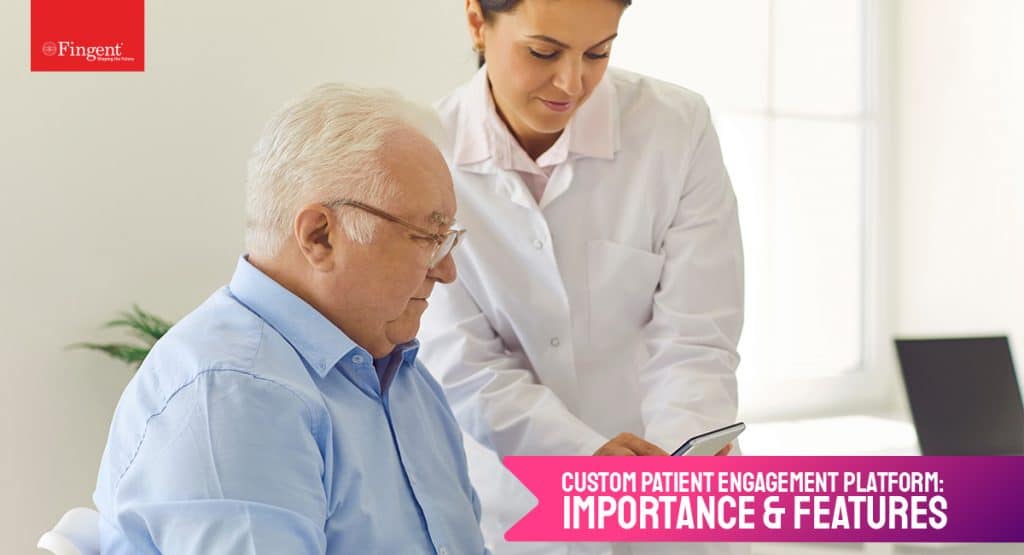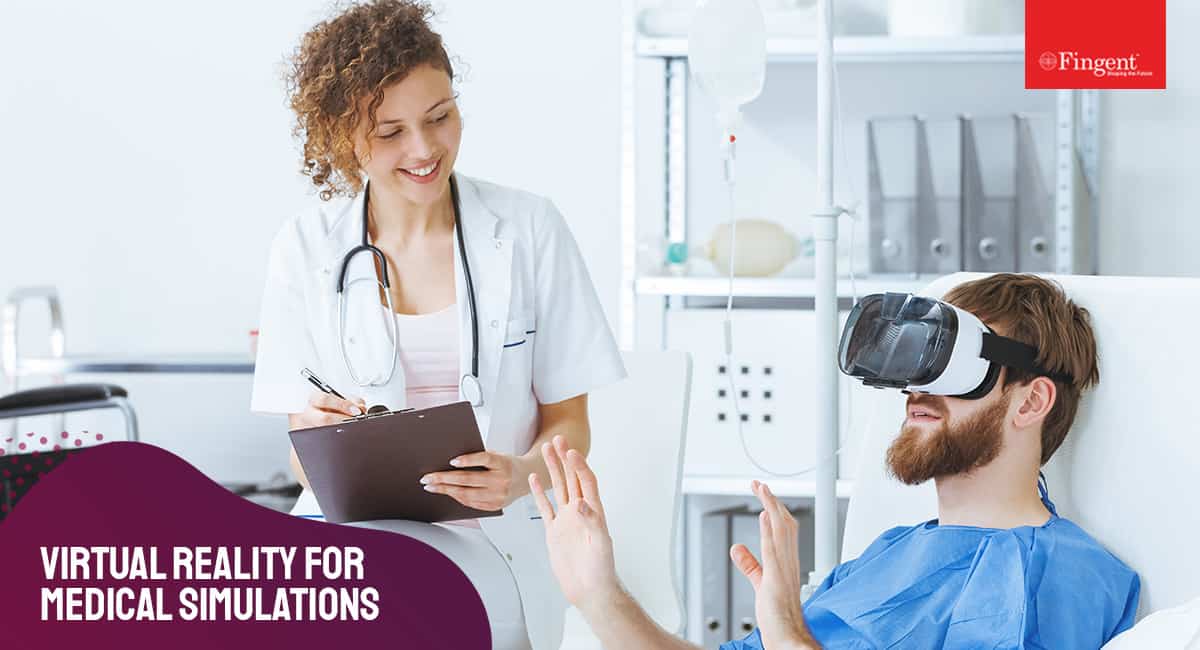Tag: Healthcare digitalization
Over the next three years, 66% of healthcare executives are planning to increase their investment in digital twin, states a recent digital health technology report. Since the outbreak of the COVID-19 pandemic, digital twin technology has been playing a key role in aiding healthcare professionals. Digital twin is used to optimize the usage of ventilators for critical patients, support contactless temperature scanning, reduce person-to-person contact, trial drugs, and prevent the risk of disease transmission. In the post-COVID-19 era too, medical researchers can leverage digital twins to analyze the existing data and study the impact caused on the human body.
In this blog, we’ll take you through what is digital twin technology and how it’s creating an impact in the healthcare industry? Let’s checkout!
The Role of Digital Twin in Healthcare
Digital twin technology allows you to replicate the physical world in a digital layout. A digital twin is a virtual model of a device, object, or process that operates in real-time to update data when changes are made. Researchers rely on digital twins to test new scenarios in real-life environments with improved safety and cost-effectiveness. In the past, the application of digital twins was limited to sectors such as industrial engineering and manufacturing. It was economically unviable to build digital twins in other fields like healthcare and education. The proliferation and affordability of innovative technologies such as IoT, AI, ML, AR, VR, and XR are accelerating the adoption of digital twins in healthcare.
Read more: The Application and Impact of Information Technology in Healthcare
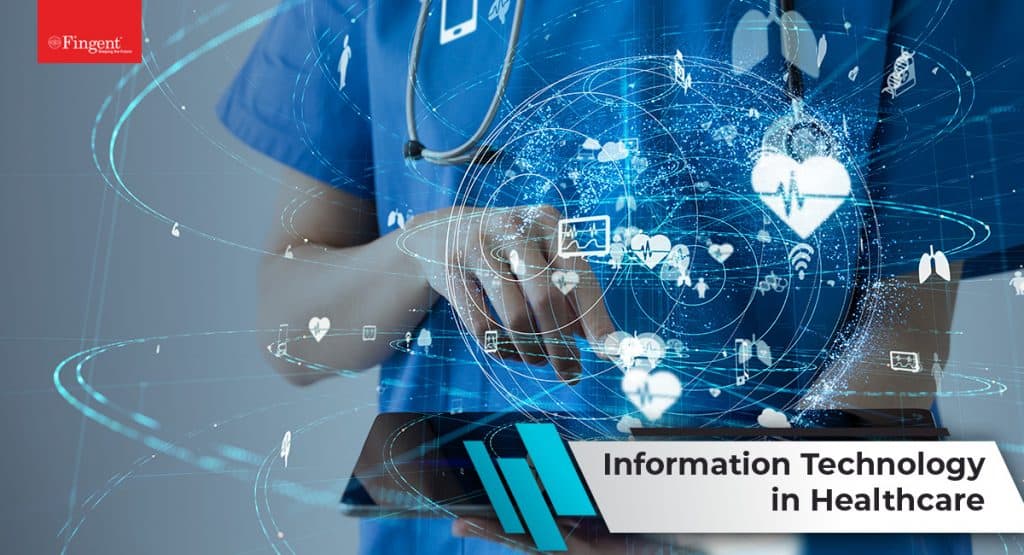
The healthcare industry is constantly striving to enhance patient outcomes, reduce operating costs, and address unforeseen medical crises effectively. The US-based Digital Twin Consortium observes that digital twin technology has the potential to improve patient turnaround, reduce patient wait times, optimize equipment utilization, cut staffing expenses, and minimize bed shortages. It helps personalize medicines based on real-time data and improve the operational efficiency and performance of healthcare organizations by identifying workflow bottlenecks and scheduling optimization.
Top 5 Applications of Digital Twin in Healthcare
Digital twins allow the creation of handy virtual models and medical simulations based on the data gathered from wearable devices, patient records, drugs and pharmaceutical companies, device manufacturers, and other healthcare departments. This helps streamline the overall clinical and caregiving processes. Listed here are the top five applications of medical digital twins:
1. Customize treatments and drug administration
Digital twins allow physicians, hospitals, and clinics to deliver patient-centric care by leveraging precision medicine. Data stored in healthcare mobile apps, medical software, wearables, fitness trackers, and other medical devices can be captured into digital twins which enables doctors and front-line health workers to address patients with persistent or critical conditions. For example, combining AI-powered anatomical analysis with the virtual model of a patient’s heart helps understand the progression of heart diseases over time. It enables medical researchers to identify how the patient will respond to new drugs, treatments, or surgical intercessions. Digital twin experiments are also conducted to analyze the progression of neurogenerative ailments such as Alzheimer’s and Parkinson’s.
2. Advance surgical procedure planning
Digital twin technology enables brain and heart surgeons to run virtual simulations of surgical procedures prior to executing complex surgeries. Testing pre-operative and post-operative surgical procedures and outcomes on a digital replica of human body parts reduces the risk of hampering human health. Advanced, patient-specific computational models of human organs help plan and augment complex surgical interventions with improved precision and care.
Read more: How Virtual Reality Benefits Autistic Patients
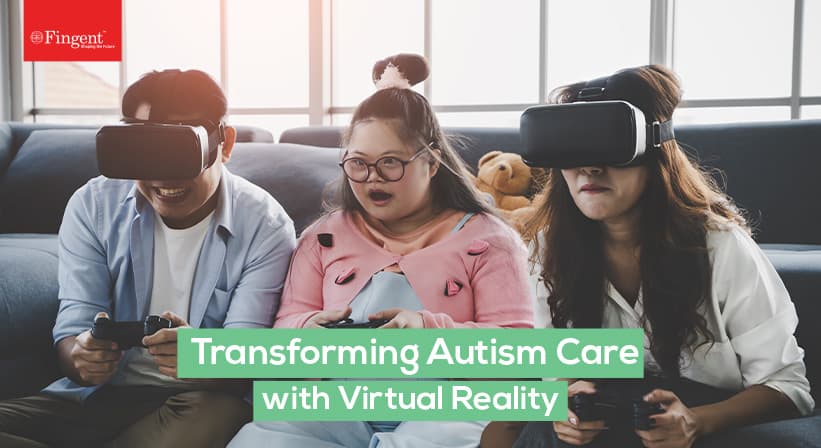
3. Enhance caregivers’ efficiency and experience
Digital twins support caregivers to gain a consolidated view of patient data scattered across various medical applications, physicians, and specialists. Technologies like Natural Language Processing (NLP) help infer the data and summarize the medical history of each patient. Capturing patient-specific information onto your medical dashboard throws better light into the context of each patient. This improves your clinical decision-making ability.
Digital twin model of a hospital allows you to measure the impact of organizational changes. For instance, you can use the virtual model to test new operational strategies, care delivery programs, staffing rotation, appointment scheduling, hospital bed facilities, surgical schedules, and so on. This helps redesign your organization’s workflow, improve coordination among various departments, and reduce the treatment window.
Case Study: How Fingent’s healthcare technology solution helped improve collaboration between doctors, patients, and caregivers
4. Test new medical devices and drugs
Federal drug regulators such as the United States Food and Drug Administration (FDA) agency as well as the European Medicines Agency (EMA) propose using AI algorithms to determine the safety and effectiveness of pilot drugs. Digital twins can simulate the health traits of a larger number of patients which helps analyze how a drug’s usage will impact a wider population. Using several inclusion and exclusion paradigms, AI helps pace up drug trials by identifying the willingness and availability of patients. Digital twins can also mitigate the harmful impact of experimental drugs and reduce the number of patients who need to undergo real-world testing.
It takes more than $2 billion to manufacture and launch a new drug into the market. Trial phase alone costs heavily and over 90% of treatments fail during this period. Capitalizing on technologies like machine learning and computational modeling helps expedite the early stages of drug design, development, and safety evaluation. Digital twins integrate the test data across various samples to give a holistic picture of the drug’s effect on patients.
5. Improve supply chain flexibility
The first wave of the COVID-19 pandemic weakened our supply chains due to the lockdowns and transportation bans across various countries. This resulted in the shortage of essential healthcare supplies. Digital twins allow healthcare organizations to create robust contingency plans to address such unpredicted events, increase bed capacity, manage emergencies during shutdowns or shortages, offer remote patient care, and design and construct new medical facilities to reach out to more patients. Hospitals, labs, and healthcare establishments can remodel their supply chain relationships to create alternative plans, improve collaboration with suppliers, and team up with authorities to plan and negotiate.
Read more: Why is it better to outsource custom healthcare software development
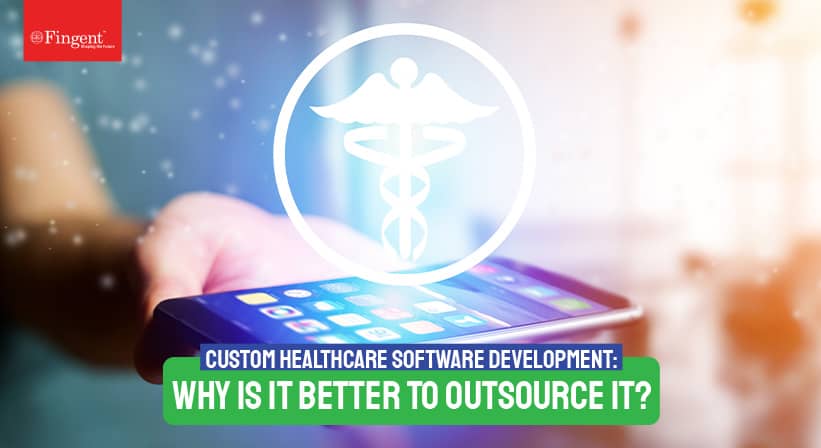
Make The Most of Digital Twins with Fingent
Healthcare application development experts at Fingent help you overcome the hurdles that defer digital twin adoption such as data gathering, quality of clinical trial datasets, and information security and privacy. We develop custom healthcare apps leveraging technologies such as VR, AI, ML, and IoT that enable you to virtually test innovations and deliver exceptional patient care. These solutions can be tailored to optimize both your clinical and operational functions. For instance, we help you develop virtual simulators for ACLS (Advanced Cardiac Life Support System), accident trauma care standard operating procedure, an orthopedic or cardiac surgical procedure involving complex tools, and Neo-natal Resuscitation Simulator (GOLDEN MINUTE PROTOCOL).
Read more: How Virtual Reality Improves the Standards of Medical Education and Training
Besides VR, healthcare providers can benefit from various customizable solutions such as connected healthcare apps powered by IoT, integrated medical dashboard software, remote patient monitoring systems, and healthcare analytics applications. Improve your organization’s technology ecosystem with Fingent. Contact us to design digital twins and drive innovation.
Stay up to date on what's new

Featured Blogs
Stay up to date on
what's new



Talk To Our Experts
Top Healthcare Digitalization Trends To Look For In The New Normal
Healthcare digitalization is reshaping the way we interact with healthcare professionals, share medical data or make decisions related to treatment and outcomes. There are plenty of examples that substantiate the digitalization of healthcare today, such as Artificial Intelligence-powered medical devices, telemedicine, blockchain, remote-patient monitoring, and electronic health records.
The main aim of healthcare innovation is to streamline the medical professionals’ work, optimize medical software systems, reduce human errors, improve patient outcomes, and lower costs through integrated web and mobile experiences.
Read more: The Application and Impact of Information Technology in Healthcare
Let’s look at the state of healthcare digitalization in 2021 and beyond:
1. On-demand Healthcare Will Grow
With the COVID-19 pandemic restricting many people to remain indoors, more and more patients seek on-demand healthcare. It is convenient as it helps patients seek guidance at their own time and from anywhere they need it.
DMN3 reveals that patients obtain online medical information primarily for the following reasons:
- 77% for booking medical appointments
- 47% for searching information about doctors and healthcare professionals
- 38% for searching information about hospitals and medical facilities
That said, on-demand healthcare is rising due to the growth of the gig economy. Here, freelance professionals from various industries hire themselves out per job or ‘gig’ instead of sticking to one company.
Read more: Patient Engagement Platforms: 7 Must-have Features
Many online healthcare marketplaces link doctors directly with short-term tasks, making it easier for physicians to deliver patient care in specific circumstances based on their expertise and schedule. Simply put, doctors are becoming on-demand healthcare providers to meet the changing needs of their patients in a better way.
2. Big Data Will Be Used To Improve Healthcare Management
Big data is the information gathered from various platforms such as eCommerce, social media, online transactions, and financial transactions. It helps identify patterns and trends for future use.
Read more: 5 Ways Big Data is Changing the Healthcare Industry
For healthcare, big data offers benefits such as:
- Reduced medication errors: Patient record analysis allows the healthcare software to flag any inconsistencies between a patient’s health and drug prescriptions. This alerts the health professionals and patients in case there is a potential risk of a medication error.
- Simplifying preventive care: Many recurring patients stepping into emergency rooms are “frequent flyers.” These frequent flyers account for up to 28% of clinical visits. Big data analysis helps identify these recurring patients and create preventive plans to keep them from returning.
- Improved staffing: Using big data’s predictive analysis, hospitals and clinics can estimate future admission rates enabling these facilities to allocate proper staff to deal with the patient. This will help save money and reduce emergency room waiting time, especially when a facility is understaffed.
Case Study: How did a data analytics solution help NHS gain financial, clinical, and geographical insights to improve visibility over their KPIs? Read Now!
Big data analytics, visualization, and insights generation can improve healthcare operations management and transform the patient experience.
3. Virtual Reality Will Transform Medical Training & Care Delivery Models
Virtual Reality is one of the most outstanding healthcare digitalization trends that change the way patients are diagnosed, and medical residents are trained.
- VR in medical diagnosis & treatments: VR is increasingly used in treatment segments in healthcare, such as patient education, robotic surgery, physical and psychological therapy, etc. For instance, medical professionals can use VR to construct a 360° patient-specific video detailing how the surgery will help the patient cure and the consequent results. Virtual Reality has been found effective in treating anxiety, post-traumatic stress disorder, and stroke.
Case Study: Find how Fingent developed a unique mixed reality application for a leading university that enables users to identify people using facial recognition. Download Now!
- VR for medical training: Other uses of VR technology include doctors and medical residents using VR simulations to hone their skills (learning in near-real situations) and safely plan complicated surgeries. In addition, VR headsets are used post-surgery to encourage patients to exercise and follow physiotherapies. The technology also enables autistic children to learn and navigate the world.
- Growth of VR in the medical field: From startups to established pharma companies, everyone recognizes the role of VR in healthcare. Experts estimate that by 2025 the global virtual and augmented reality in healthcare will reach $5.1 billion market value. So, if you’re a healthcare company wanting to improve your digital marketing strategy, you should consider investing in VR.
Read more: How Virtual Reality Improves The Standards Of Medical Education And Training
Virtual Reality technology offers a powerful communication channel that allows you to understand customers’ needs better and virtually engage them with your products and services.
4. Wearable Medical Devices Will Enjoy A Wider Market
Another major healthcare digitalization trend is companies collecting their health data from medical devices such as wearables. Previously, most people would check in with their doctors only when something went wrong and were used to undergoing physical check-ups once a year. However, technology is changing that. Today, people highly focus on preventive maintenance and are interested in knowing about their health status frequently. This trend forces several healthcare companies to invest in wearable technology devices that allow patients or family members to track health vitals and seek medical aid when needed. Wearable medical devices enable up-to-date monitoring of high-risk patients and determine the likelihood of any severe health risk.
Experts estimate that the wearable medical device market value will cross USD 27,200 mn by 2023.
Following are some of the widely used wearable devices:
- Exercise trackers (Google Fit, Fitbit, etc.)
- Heart rate sensors (Samsung Heart Rate Sensor, Pulse Sensor, etc.)
- Sweat meters: to monitor blood sugar levels of diabetics
- Oximeters: to monitor the amount of oxygen carried in the blood
Wearable devices in healthcare offer the following benefits:
- Personalized healthcare experience: Medical devices help patients improve their health and give them a sense of ownership regarding personal healthcare management.
- Insurance pricing: Wearable devices provide insurers with insights that enable them to rate a patient’s risk for illness more accurately.
- Insurance incentives: Wearable devices allow patients to take preventive measures to improve their health. Such patients are more likely to obtain lower insurance premiums.
- Gamification opportunities: Fitness watches can help create competitive goals for users to achieve through diet, nutrition, and exercise.
Case Study: Read more about how Fingent helped create a fitness Regimen app for trainers.
5. Healthcare AI Investments Will Increase
By 2025, the healthcare AI-enabled tools market is expected to exceed $34 billion globally. This indicates that healthcare AI investments will peak soon as Artificial Intelligence is set to transform various segments in medicine.
AI-powered chatbots and virtual health assistants fulfill many roles in the healthcare industry, such as customer service representatives, diagnostic tools, or even therapists. Hence AI in healthcare is gaining immense popularity. According to a report published by MarketsandMarkets, the global healthcare chatbots market is estimated to reach $314.3 million by 2023.
Read more: 5 Leading Chatbot Use Cases Explained with Real-life Examples
That said, we can witness the real power of AI in diverse areas such as medical imaging, drug discovery, precision medicine, and genomics. For example, the first-ever drug designed by AI is showing some promise to help patients suffering from obsessive-compulsive disorder. The AI-made drug molecule, DSP-1181, is in clinical trials currently. Researchers and scientists expect that the use of AI will make drug development faster and more efficient.
Overall, AI is projected to bring USD 150 billion by 2026 in annual savings for the US healthcare economy. As start-ups are lapping up the opportunity, the number of active AI start-ups has increased 14 times since 2000.
Why Keep A Close Eye On These Healthcare Digitalization Trends
These five healthcare digitalization trends will spill over in the future as the industry will innovate and adapt to meet the patients’ demands. As a result, organizations that embrace healthcare digitalization will see dividends sooner.
Fingent helps you navigate the digital healthcare space and adapt to the ‘Next Normal’ with our transformative experiences. Our custom healthcare software solutions have helped many of the leading healthcare providers worldwide. Contact us to learn more about how your healthcare organization or clinic can leverage healthcare digitalization effectively.
Stay up to date on what's new

Featured Blogs
Stay up to date on
what's new











